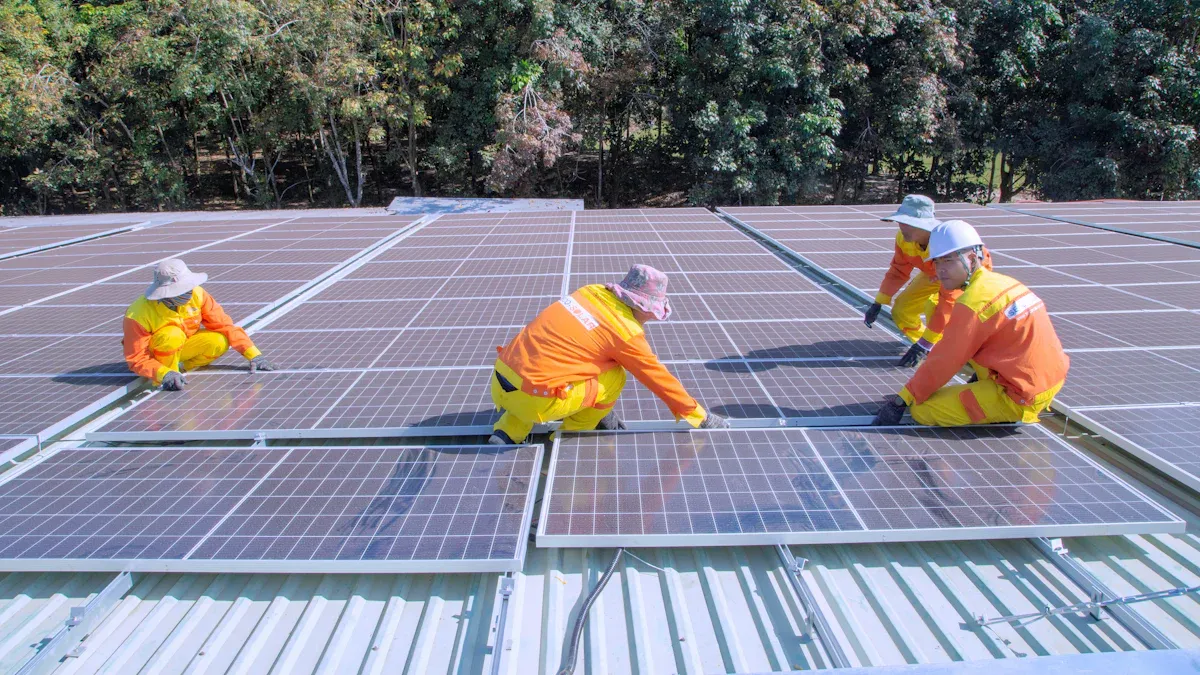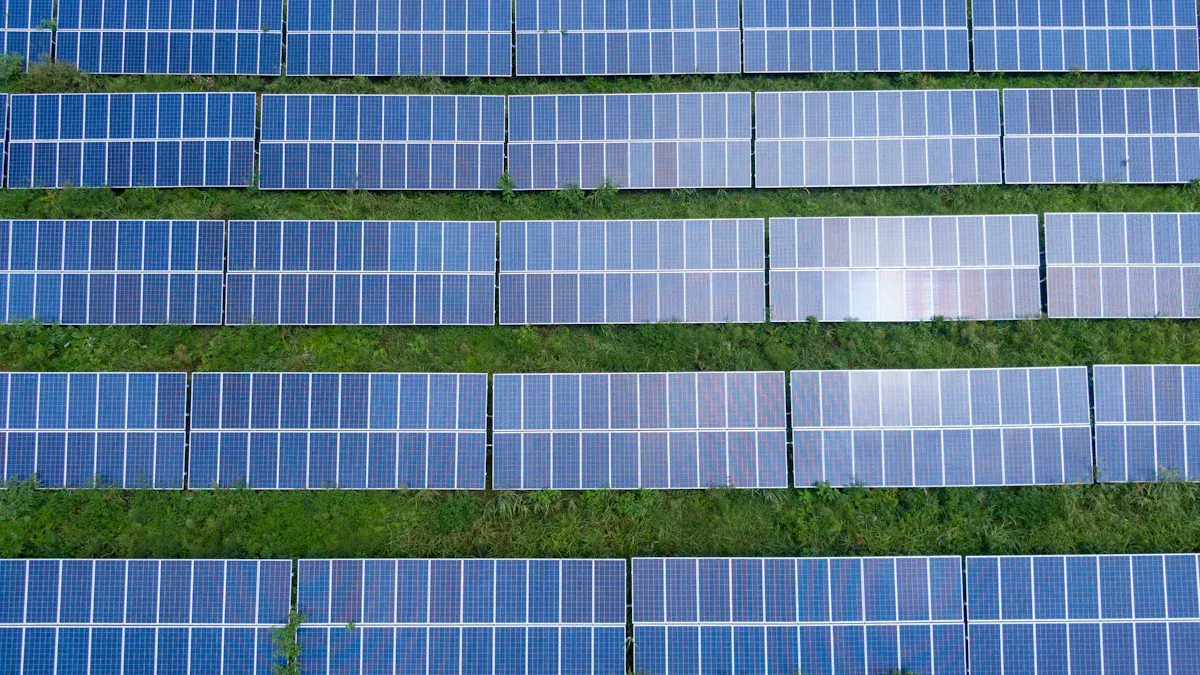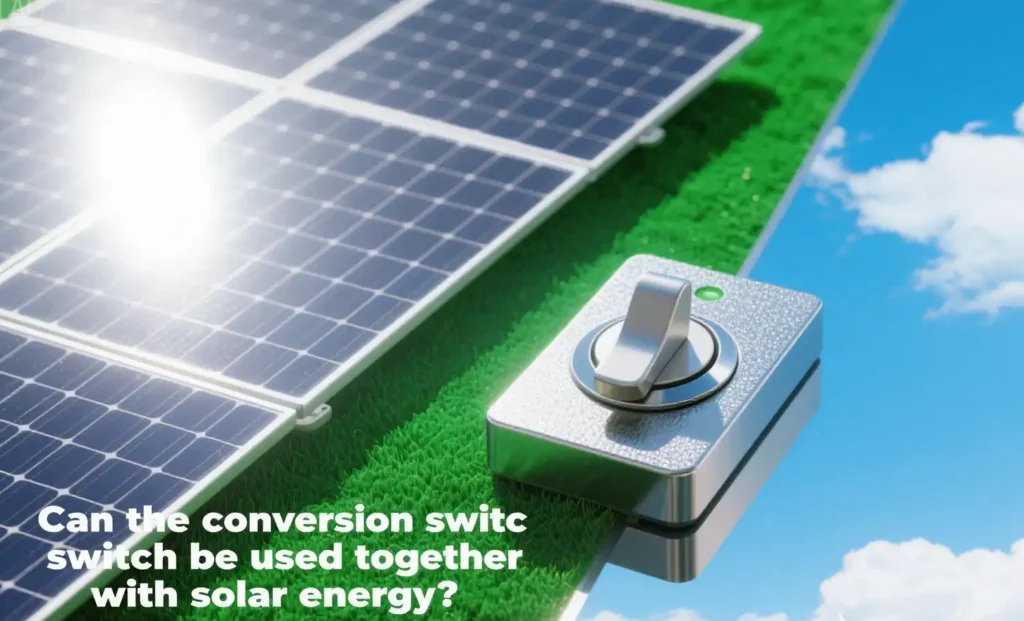A conversion switch connects solar power to other energy sources. It helps switch between power inputs smoothly for better energy flow. Conversion switches are great for making solar systems work efficiently. Soft switching designs can convert energy with up to 96.3% efficiency. This is better than basic or hard switching methods. Reduced switch converters cut down power waste and save money. They are important for managing energy well. By keeping voltage steady and improving power quality, conversion switches make solar energy systems more reliable.
Key Takeaways
-
A conversion switch helps solar systems by controlling energy flow well.
-
It can make energy use better, with some reaching 96.3% efficiency.
-
Hybrid solar systems use these switches to save money and manage energy.
-
Taking care of conversion switches often keeps them working their best.
-
Though setup costs are high, they save money and help the environment over time.
Understanding the conversion switch
What is a conversion switch?
A conversion switch is a tool that controls energy flow. It helps energy move smoothly between sources like solar panels and the grid. Think of it as a traffic cop for energy, guiding power where it’s needed.
These switches are key for renewable energy systems. They handle changes in energy from sources like solar power. For instance, during the day, extra solar energy can go to storage or the grid. At night, when solar power isn’t available, the switch uses other energy sources without issues.
How does a conversion switch work in energy systems?
A conversion switch changes energy types, like AC to DC or DC to AC. This is important for using solar power with existing systems.
High Voltage Direct Current (HVDC) systems, using Voltage Source Converter (VSC) technology, are vital here. They change power between AC and DC, making solar energy work better. HVDC VSCs can turn on and off as needed, keeping the grid stable even when solar power changes.
The switch works using electromagnetic repulsion. A coil makes a magnetic field, creating force to operate the switch. This reduces energy waste and improves efficiency. For example, studies show electromagnetic repulsion can reach 5.02% energy efficiency, proving its usefulness.
Applications of conversion switches in renewable energy
Conversion switches are used in renewable energy to improve performance. In solar systems, they connect solar panels, inverters, and the grid. This ensures energy flows well, whether it’s being used, stored, or sent back to the grid.
The history of these switches shows the need for better energy management. George Westinghouse’s work on high voltage transmission helped modern conversion technology grow. Over time, tools like switch mode power supplies (SMPS) boosted power and efficiency, making these switches essential for renewable energy.
Here are some key moments in their development:
-
1970s: SMPS became common in industries.
-
1980s-1990s: Standard switching power supplies with auto-ranging input appeared.
-
1990s: Big efficiency improvements came with new technology.
Today, conversion switches are crucial for hybrid systems using solar and other renewable sources. They help manage energy smoothly, so systems work well in different conditions.
Integration of a conversion switch with solar power systems

Compatibility with solar panels and inverters
A conversion switch works well with solar panels and inverters. It helps transfer energy efficiently between these components. Solar panels make direct current (DC), but most homes and grids use alternating current (AC). Inverters change DC into AC, and the switch ensures they work together smoothly.
There are different types of inverters:
-
Central Inverters: Used in big solar plants, connecting many panels to one inverter.
-
String Inverters: Link a group of panels to one inverter. If one panel fails, it affects the whole group.
-
Microinverters: Placed on each panel, letting them work independently. These are more efficient but cost more.
Inverters quickly change DC into AC to supply quality power. By combining these tools, solar energy systems can work better and fit household needs.
Managing energy flow between solar and grid power
A conversion switch helps control energy flow between solar and grid power. It switches between solar and grid electricity based on need. During sunny days, extra solar energy goes to storage or the grid. At night or when it’s cloudy, the system uses grid power to keep energy steady.
Different converters improve this process:
|
Converter Type |
Functionality |
Application |
|---|---|---|
|
Raises input voltage |
Helps get more power from solar panels |
|
|
Buck Converter |
Lowers input voltage |
Controls voltage in grid-connected systems |
|
Buck-Boost Converter |
Raises or lowers voltage |
Works in many power systems |
Boost converters stop reverse current and improve solar voltage output. This makes solar and grid systems work better, cutting energy loss and boosting performance.
Examples of hybrid solar energy systems
Hybrid solar systems mix solar power with grid or battery energy. They use a conversion switch to manage energy flow and improve efficiency.
One example is a solar home system that switches between solar and grid power. It stores extra solar energy in a battery or water heater. This setup saves money by using solar energy during expensive grid times.
Another example is a hybrid system with a 72.8 kW solar array and a 59.4 kW converter. It allows energy to flow both ways, improving grid delivery. A new algorithm helps the system run at its best power levels, increasing efficiency.
Hybrid systems also show strong performance. For example, a monocrystalline silicon PV system has an 83.9% performance ratio and a 14.31% capacity factor. These numbers prove hybrid systems can provide reliable and affordable energy.
Adding a conversion switch improves hybrid systems. It ensures smooth energy changes and maximizes solar energy benefits.
Benefits of using a conversion switch with solar energy

Better energy efficiency and performance
A conversion switch helps solar panels work more efficiently. It gets the most power from sunlight, even in bad weather. Smart tools like Maximum Power Point Tracking (MPPT) make this possible.
-
MPPT adjusts systems to collect the most sunlight energy.
-
Double-diode models, boost converters, and smart controllers improve efficiency.
-
These tools help solar systems handle changing conditions and keep energy steady.
Using these technologies reduces wasted energy and boosts solar power. This makes your system work better and gives you reliable energy.
Increased reliability in solar systems
A conversion switch makes solar systems more dependable. It smoothly switches between solar and grid power. This is helpful at night or on cloudy days when solar power is low.
Tip: Grid-tied systems with conversion switches ensure steady energy supply.
The switch keeps voltage stable and stops energy spikes. This protects your appliances and keeps them running well. With better reliability, your solar system can meet your energy needs every day.
Long-term savings and smarter energy use
A conversion switch saves money over time. It reduces grid power use and increases solar savings. You can store extra solar energy or send it to the grid for credits.
Good energy management lowers costs. For example, hybrid systems use solar power during expensive grid times. This cuts bills and boosts savings.
Note: The upfront cost may be high, but long-term savings make it worth it.
By using less non-renewable energy, you save money and help the planet. This gives you financial benefits while supporting a greener future.
Challenges of using a conversion switch with solar energy
Installation costs and technical requirements
Adding a conversion switch to solar systems can cost a lot. You need to buy the switch, hire experts, and connect it to your setup. Grid-tied systems may also need extra parts like converters or controllers. These increase the total cost.
There are also technical challenges. Conversion switches must be set up carefully to match solar panels and inverters. If not done right, the system might not work well or could get damaged. Technicians need special training to install these switches. Without skilled help, the process can take longer and be harder.
Maintenance and potential compatibility issues
Keeping a conversion switch working needs regular care. Dust, water, or wear can lower its performance. You should check and clean the switch often to prevent problems.
Sometimes, older solar systems don’t work well with new switches. Some switches may not fit certain inverters or panels. This can make them less useful and cut energy output. For example, advanced hybrid systems might need newer switches that don’t work with old setups.
Scenarios where a conversion switch may not be necessary
In some situations, you might not need a conversion switch. Simple off-grid solar systems often skip the switch. They connect solar panels directly to batteries instead.
Small renewable setups, like for camping, may not need a switch either. These systems focus on being easy to use and portable, not on advanced energy control.
Tip: Think about your energy needs and system size first. This helps you save money and keep your solar setup simple and effective.
A conversion switch helps your solar system work better. It boosts energy efficiency, keeps it reliable, and saves money over time. By using this tool, you can improve how energy flows in your setup. Though installation and upkeep might seem hard, the advantages are greater. Adding a conversion switch is a wise choice to get the most from solar energy.
FAQ
What is net metering, and how does it work with solar energy systems?
Net metering lets you send extra solar power to the grid. Your utility company gives you credits for this energy. When your panels make less power, you can use these credits to lower your bill.
Do all solar systems require a conversion switch?
Not every solar system needs a conversion switch. Off-grid systems usually connect panels straight to batteries. But hybrid or grid-tied systems use a switch for better energy control.
Can a conversion switch improve energy efficiency in solar systems?
Yes, a conversion switch makes solar systems more efficient. It helps switch smoothly between solar and grid power. This cuts energy waste and improves system performance.
Is net metering available everywhere?
Net metering rules depend on where you live. Some places give full credit for extra energy, while others don’t. Check with your utility company to learn the rules in your area.
How does a conversion switch contribute to long-term savings?
A conversion switch helps you use solar power wisely. It lowers grid power use and boosts savings with net metering. Over time, it cuts costs and increases your solar system’s value.
The following information may be of interest to you
How to improve the efficiency of inverters?
Household solar energy storage battery
What is the Function of a Distribution Box in Electrical Systems



